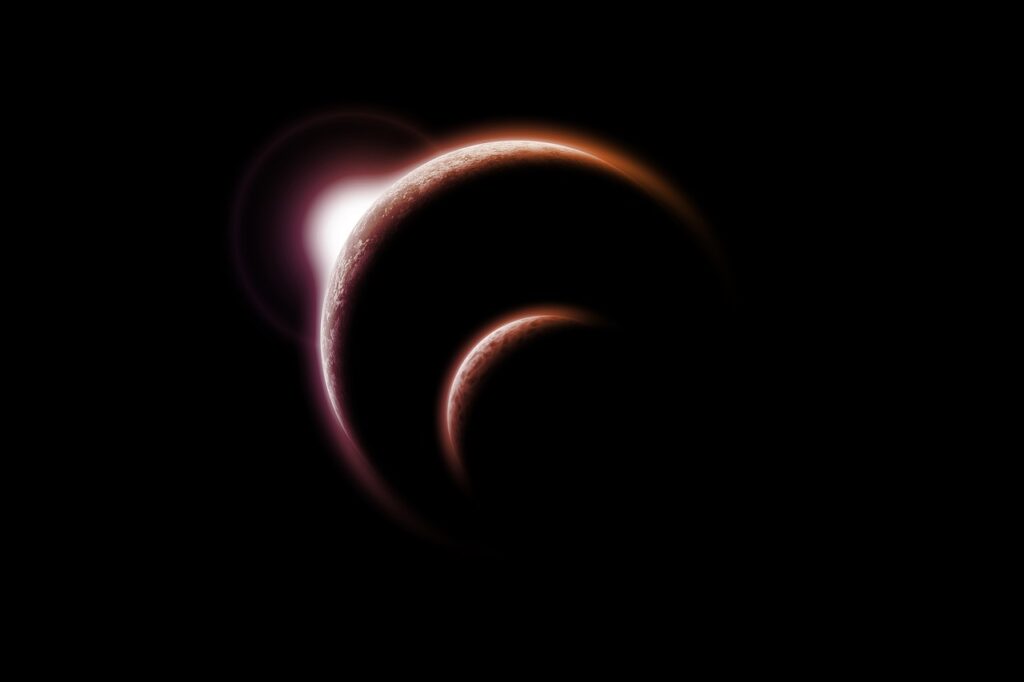Scientists from Cambridge University have uncovered signs in the atmosphere of the exoplanet K2-18b that might suggest the existence of life beyond Earth. Using NASA’s James Webb Space Telescope (JWST), the team identified chemicals that are typically produced by simple life forms on Earth. The findings, which mark a significant step in the search for extraterrestrial life, require more data for confirmation. Lead researcher Professor Nikku Madhusudhan believes a definitive answer could emerge within the next couple of years.
K2-18b: A Potentially Habitable Exoplanet
K2-18b, located 700 trillion miles from Earth, is a unique planet roughly 2.5 times the size of Earth. It orbits a small red star, and JWST’s advanced technology enabled the researchers to study the planet’s atmosphere by analyzing light filtered through the star’s glow.
This detailed study revealed the presence of molecules like dimethyl sulphide (DMS) and dimethyl disulphide (DMDS). On Earth, these gases are produced by marine organisms such as phytoplankton and bacteria, indicating the potential for life. Professor Madhusudhan highlighted the gas concentrations on K2-18b, noting that the amounts were “thousands of times higher” than those found on Earth.
The Significance of DMS and DMDS
The discovery of these chemicals raises exciting possibilities about the potential for life on K2-18b. If life is indeed responsible for the presence of these molecules, the planet could be home to vast numbers of organisms. “If we confirm that life exists on K2-18b, it could imply that life is more common across our galaxy than we ever thought,” Madhusudhan explained.
Skepticism and the Need for Further Research
While the findings are promising, they have not yet met the stringent criteria for scientific certainty. To claim a discovery of life, scientists require a 99.99999% certainty, known as a “five sigma” result. Currently, the detection only reaches three sigma (99.7%), which suggests that while the findings are compelling, they are not definitive. Eighteen months ago, the same team reached a much less convincing result of one sigma, which was met with skepticism in the scientific community.
Even with more robust data, questions about the origins of the gas remain. Professor Catherine Heymans, a researcher at Edinburgh University, noted that while the gases are associated with microbial life on Earth, non-biological processes could also produce them. “We cannot simply assume that the same processes apply on another planet,” she cautioned.
Alternative Theories About K2-18b’s Environment
The scientific community is divided on the planet’s composition and the potential for life. Some scientists believe that K2-18b may have a vast liquid ocean that could absorb ammonia, which would explain its absence in the atmosphere. Others, including Professor Oliver Shorttle of Cambridge, suggest that the absence of ammonia could indicate a molten rock ocean, which would likely rule out life.
Another theory, proposed by Dr. Nicolas Wogan of NASA’s Ames Research Center, suggests that K2-18b could be a mini gas giant without any solid surface. This would significantly reduce the likelihood of life as we know it. However, some researchers disagree, arguing that Wogan’s theory contradicts data from JWST.
The Ongoing Search for Answers
Professor Madhusudhan and his team remain cautiously optimistic about the future of this research. He acknowledged that much work lies ahead in confirming whether K2-18b could support life. “Years from now, we may look back at this moment as the turning point in our search for life beyond Earth,” he said.
Despite the uncertainties, this discovery adds to the growing body of evidence suggesting that the universe may harbor more than just Earth-like life. As scientists continue to analyze data from the JWST and other space observatories, humanity may be on the verge of answering one of the most profound questions in science: Are we alone in the universe?
The search for life beyond Earth has taken a significant leap forward with the detection of potential life-related molecules on K2-18b. While further research is necessary to confirm these findings, the possibility of extraterrestrial life has never seemed more tangible. As scientists work to refine their analysis, the next few years could bring us closer to an answer. For now, K2-18b remains a fascinating subject in the ongoing quest to understand our place in the cosmos.
